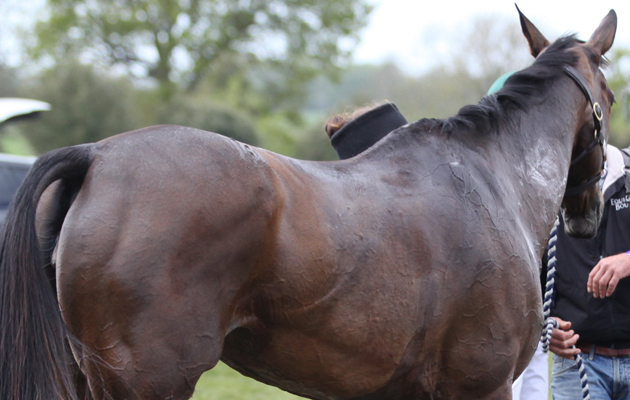Providing a constant supply of water is a golden rule of good management. But when you’re at a competition or staying away from home, it can be alarming to discover that your horse won’t drink.
Endurance rider Jill Thomas says that one solution is to tempt your horse to go apple bobbing.
“Put some pieces of apple or carrot in a bucket of water and you’ll often find that the horse will be eager to pick them out – and he’ll take in water at the same time,” she says.
The classic endurance technique is to tempt the horse with a very sloppy mixture of soaked sugar beet.
“One of my horses won’t touch that, but he does like water with apple juice added to it,” says Jill. “You can also add peppermint cordial or molasses. It’s a case of trying out different flavourings to see which appeals to your horse.”
She finds that while some horses are fastidious about the cleanliness of the water and the container, others prefer earthier flavours.
“If you wash your horse down with a sponge and then leave it in the bucket, he might prefer that to clean water because of the slightly salty flavour,” suggests Jill. “He’ll also go bobbing for the sponge!”
Similarly, many horses prefer to drink from puddles on long rides or out hunting. Jill believes that this is to get the mineral content.
“Some horses are put off by the noise of automatic waterers if they’re not used to them,” she says. “I cover them up and use buckets – which means that I also know how much my horse does or doesn’t drink.”
She also finds that adding electrolytes to the feed encourages the horse to drink plain water.
Dr David Marlin, head of physiology at the Animal Health Trust, Newmarket, says that some horses drink more readily from buckets in wall holders.
“It prevents bedding falling in the water. Some horses are put off by the smell of shavings,” he says.
It also means that the horse does not have to lower his head to the ground behind the door, when he may feel vulnerable because his vision is restricted.
“Try to keep everything as similar as possible to the routine at home,” David advises. “Use the same sort of containers and if you’re going to use flavourings, try them at home first.”
Ray Somers, a freelance groom who works for national and international transporters, says that horses who refuse water when offered buckets at rest stops will often drink if small corner mangers can be fitted into lorries and half-filled.
He knows some horses who are influenced by colour. “If they’re used to, say, a black bucket, they don’t like it if you suddenly put in one of a different colour,” he says.



